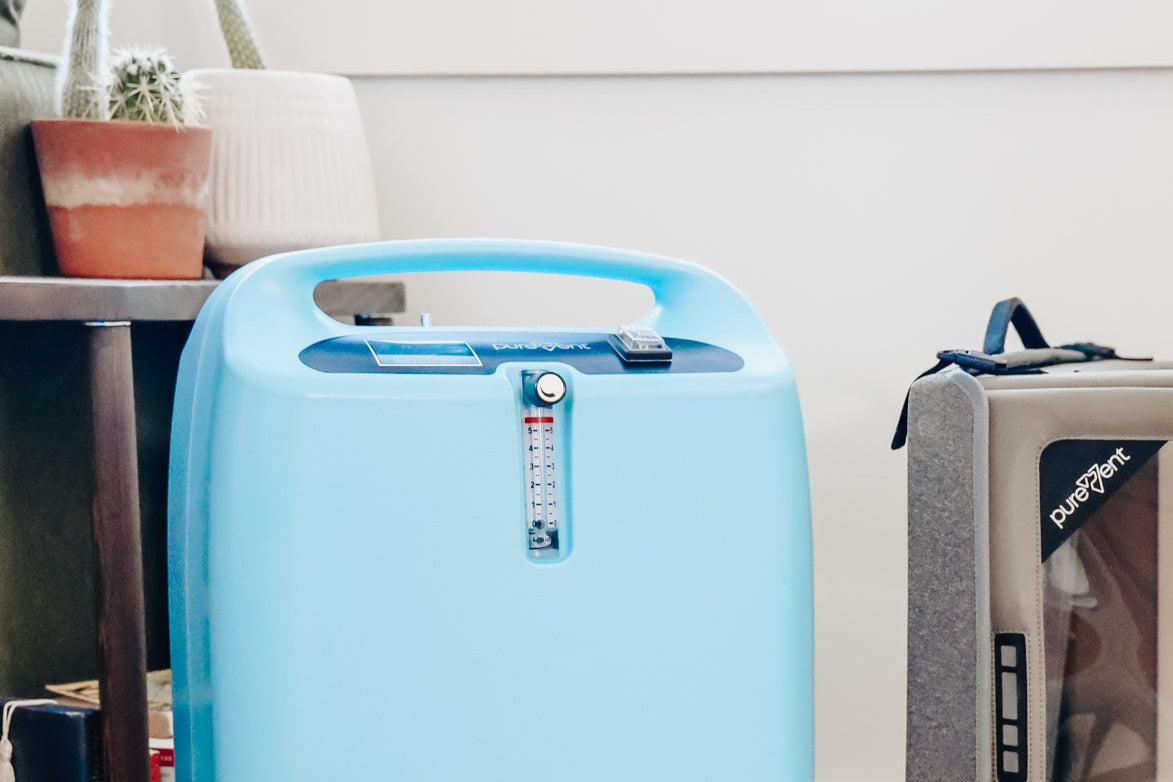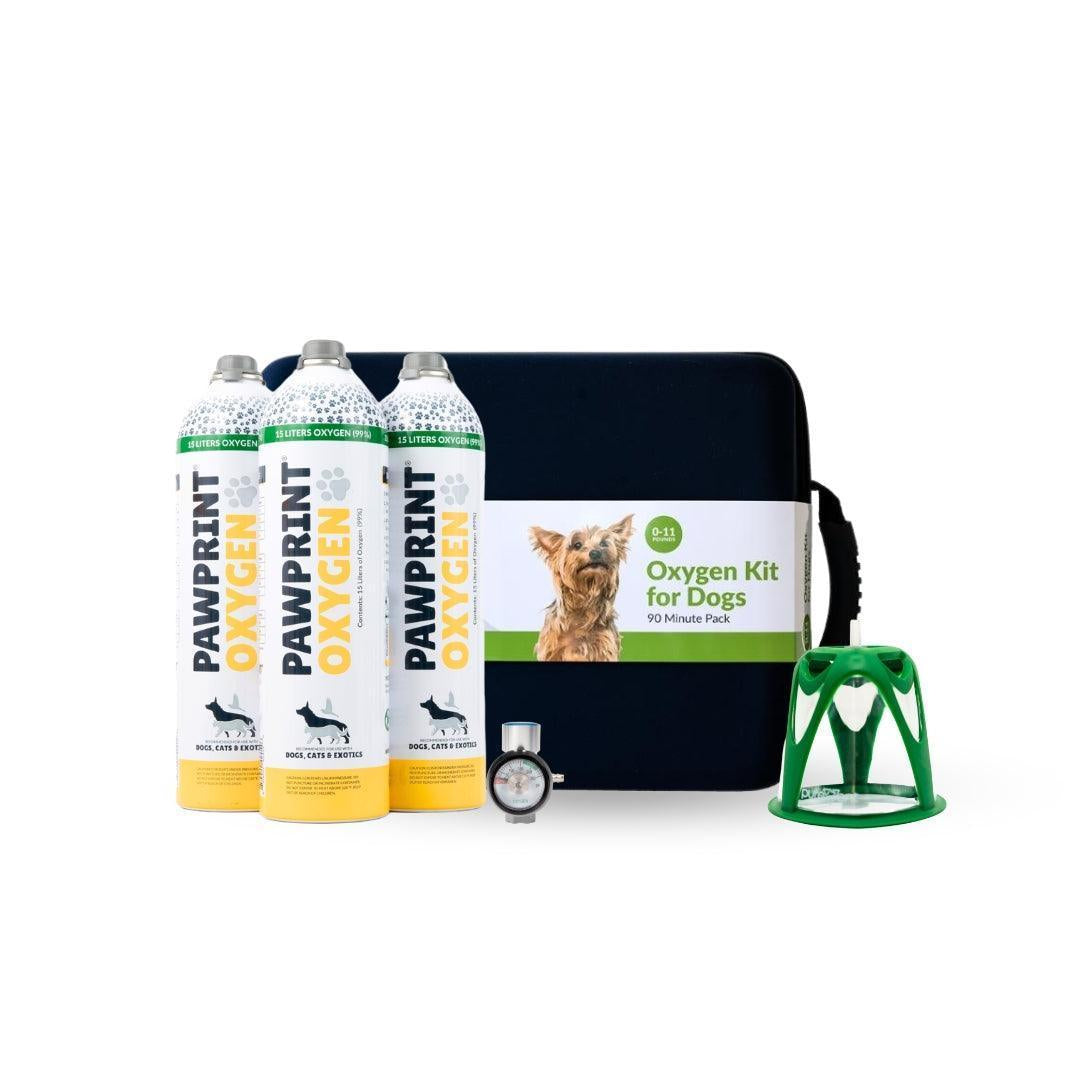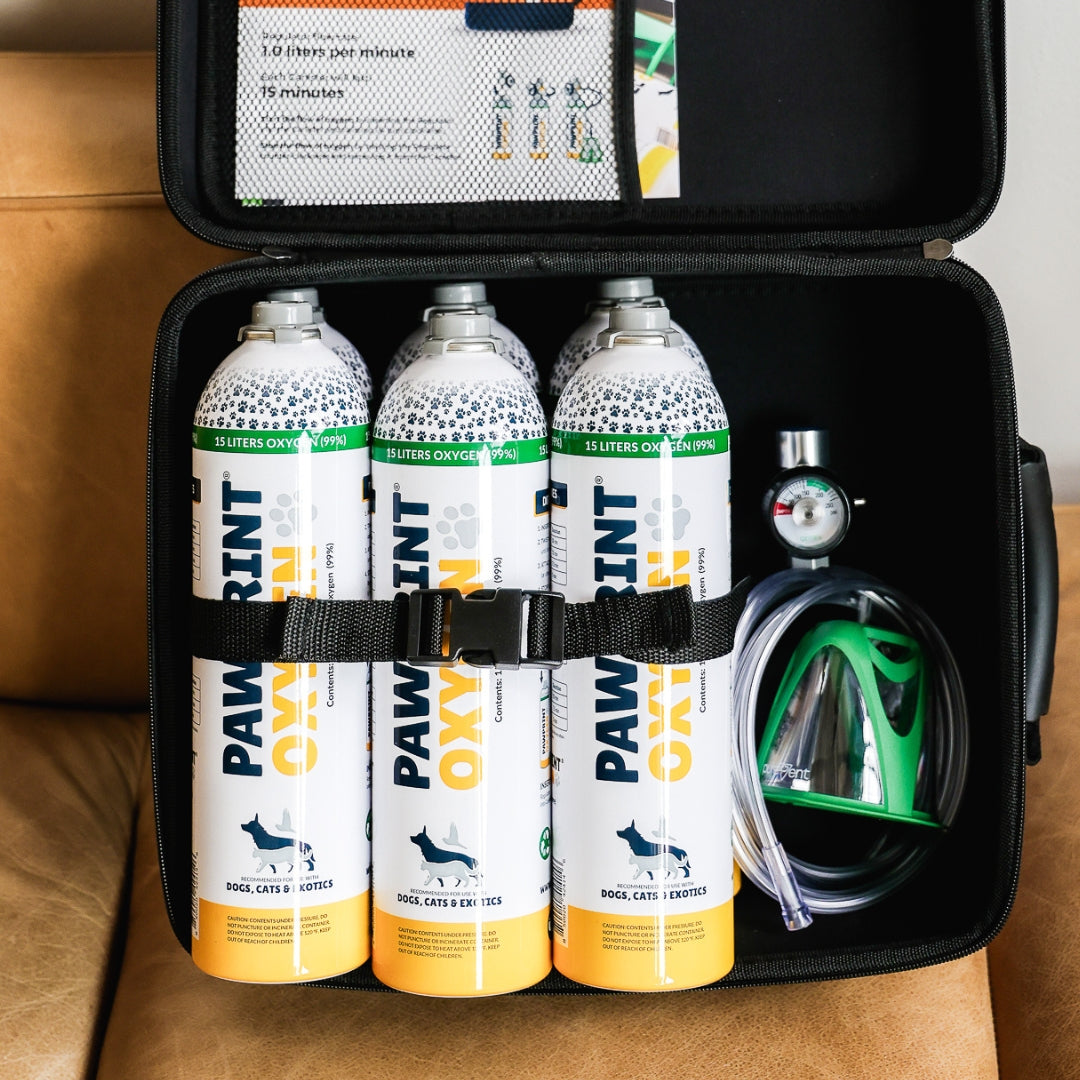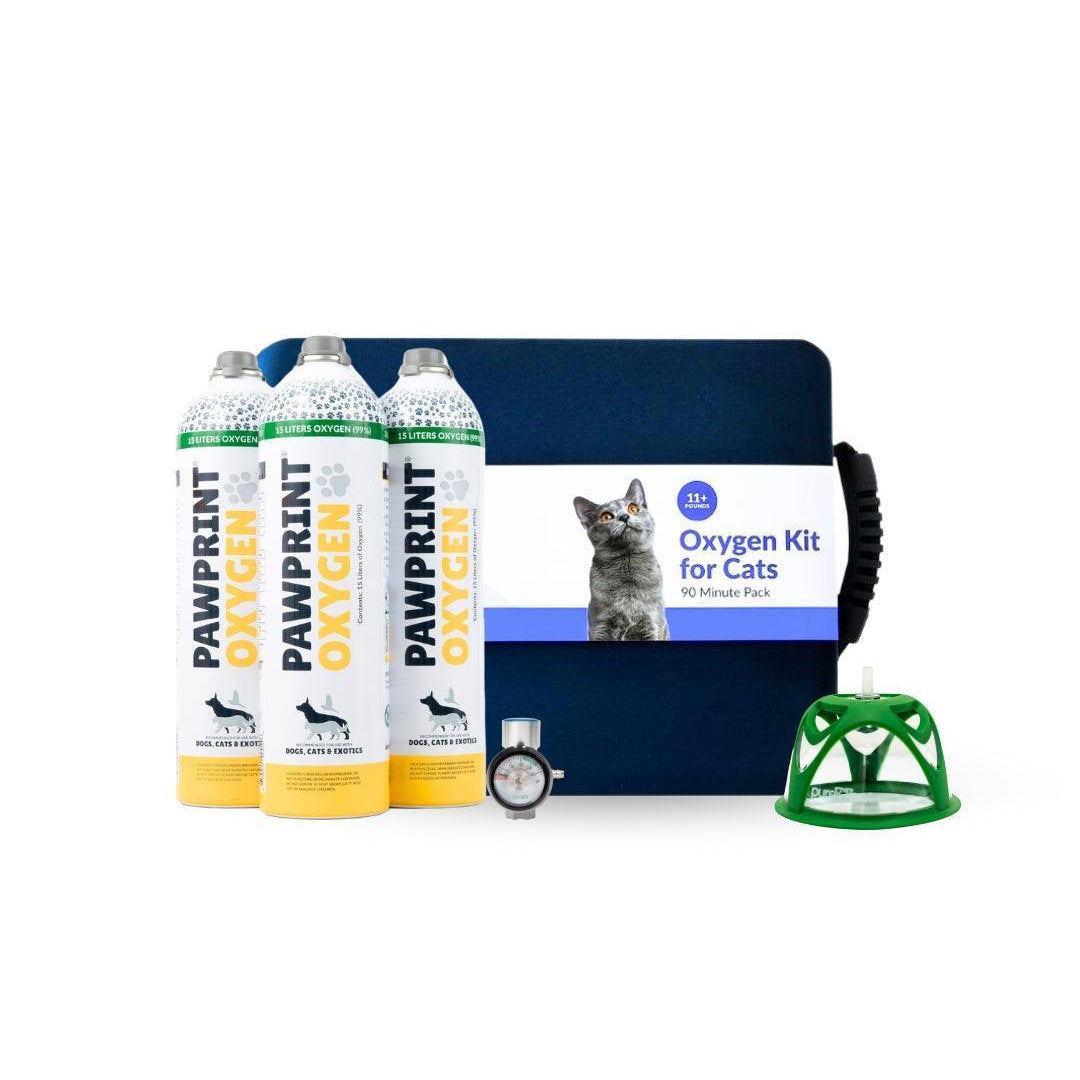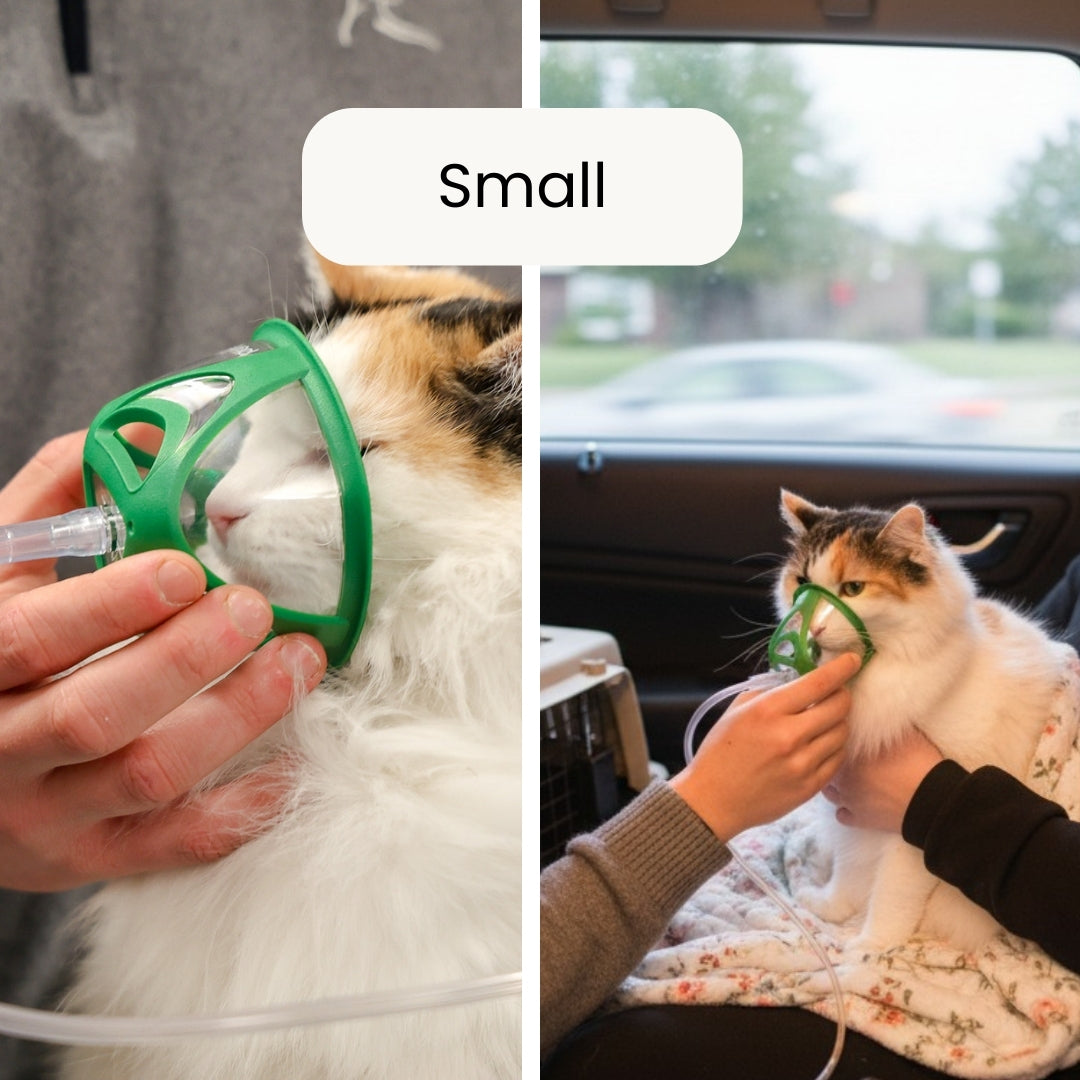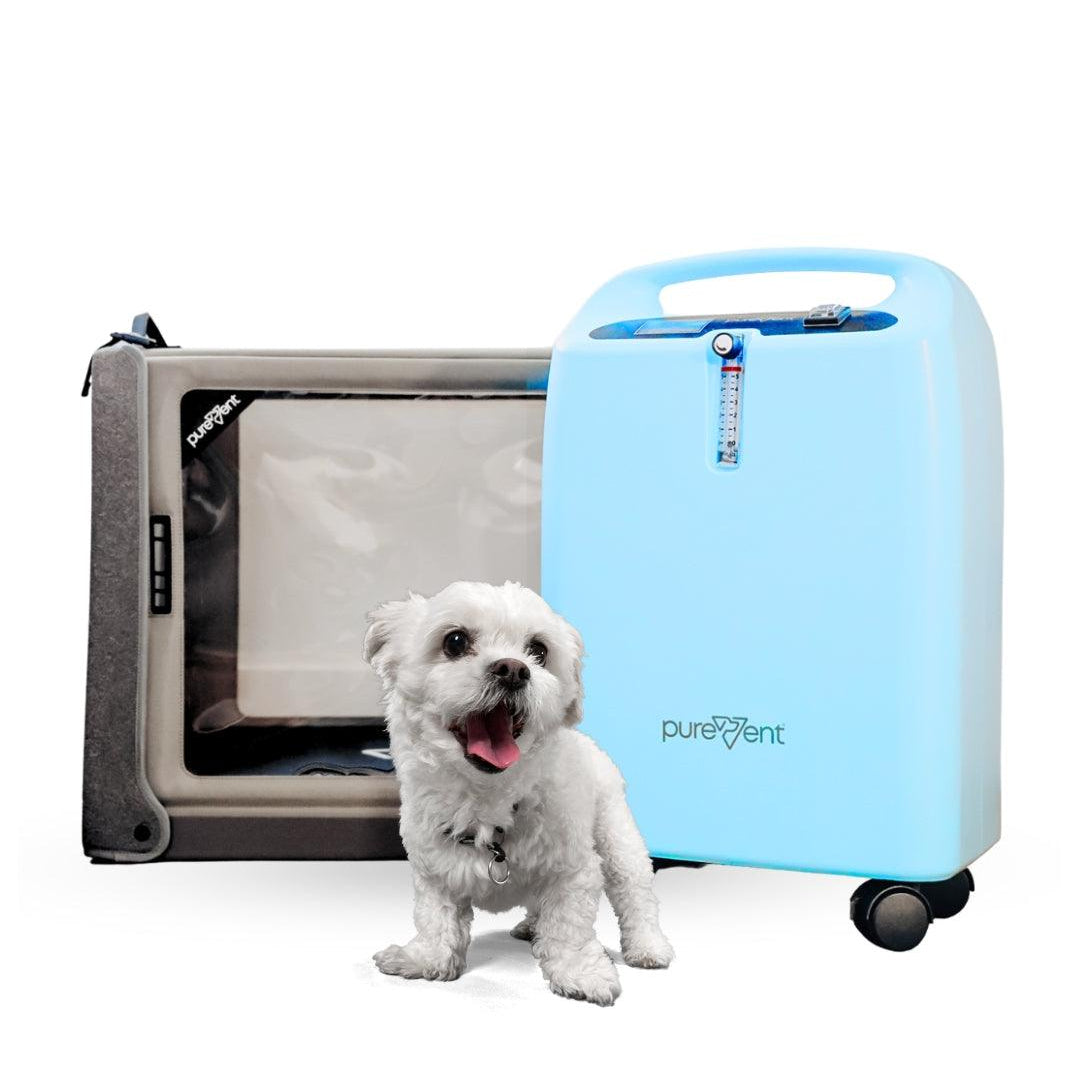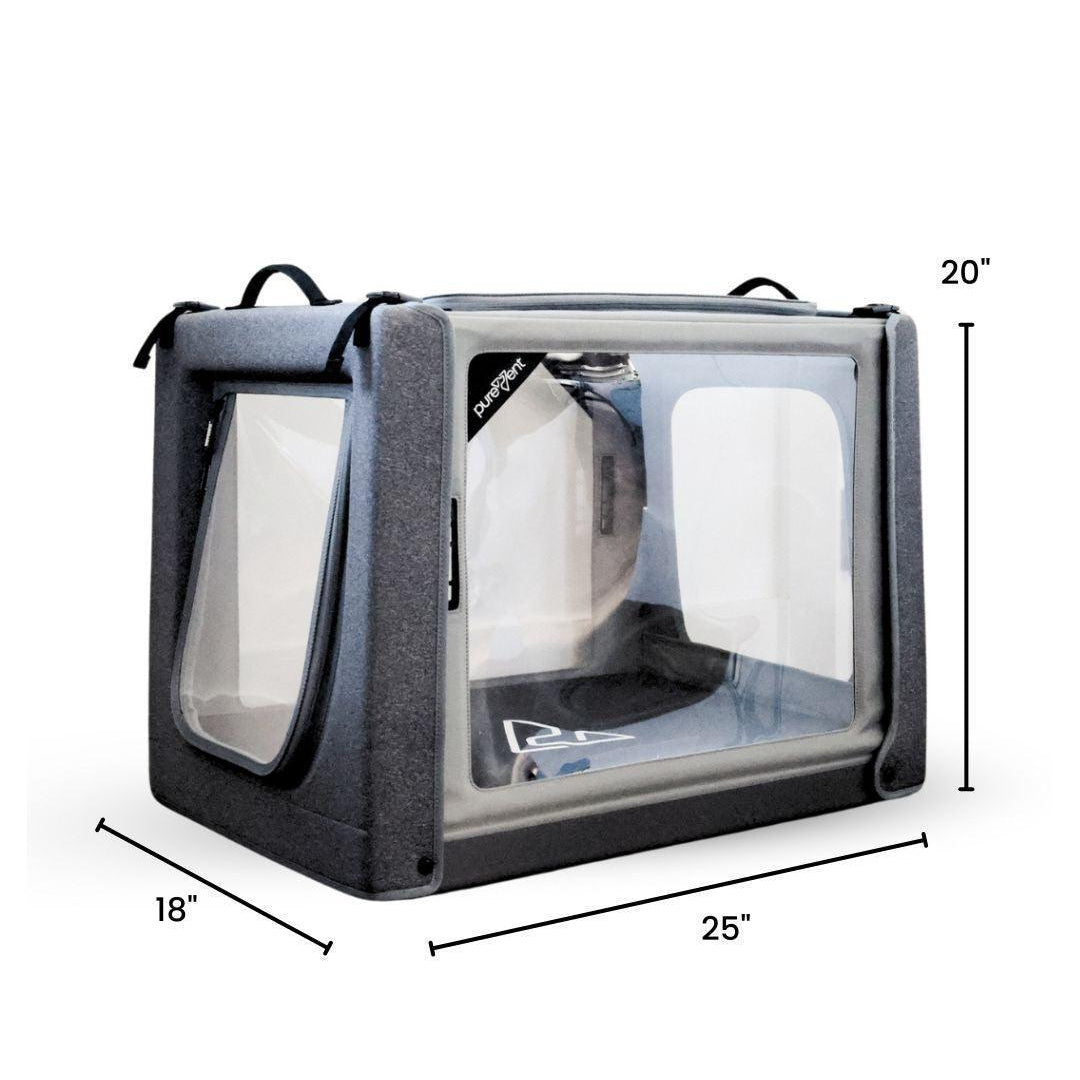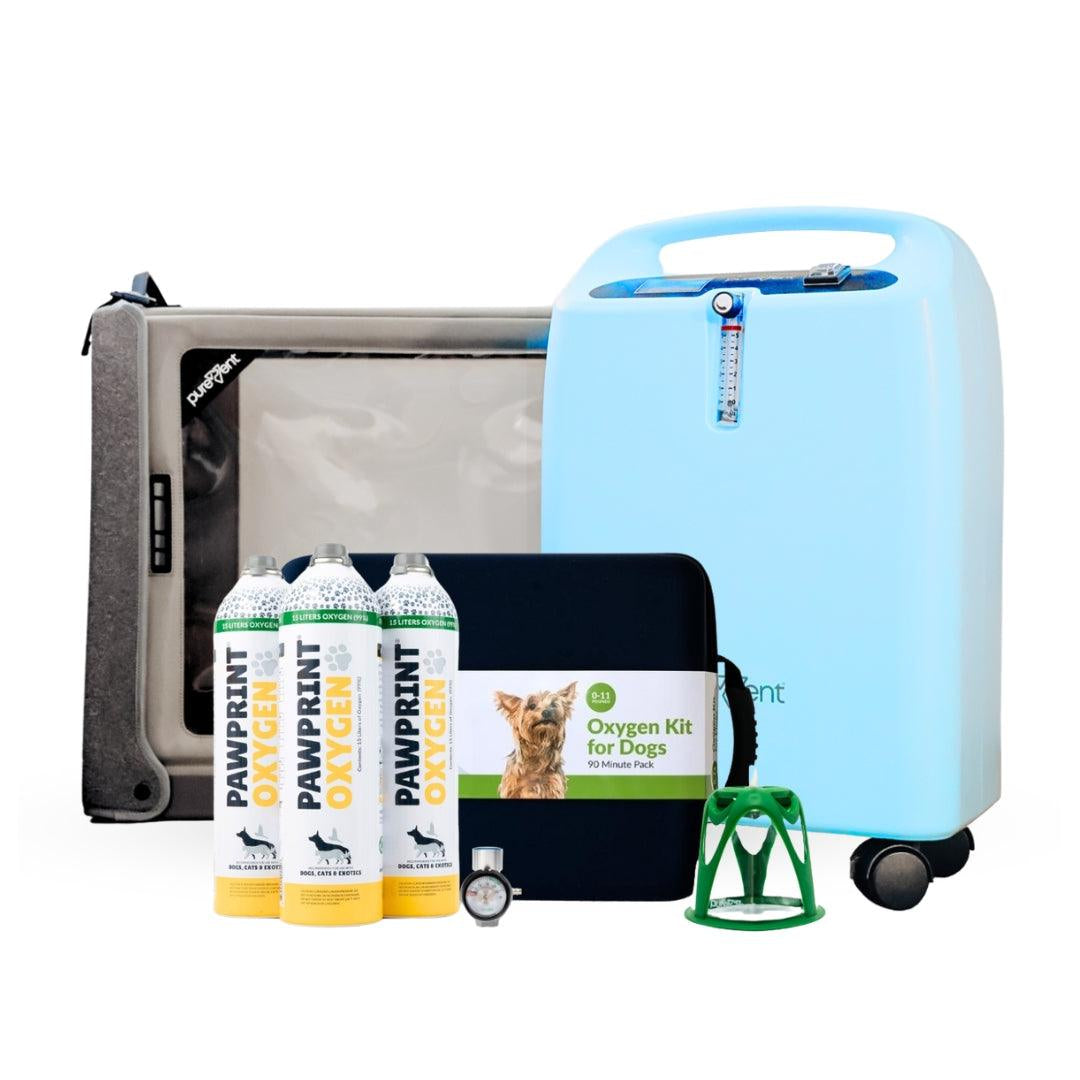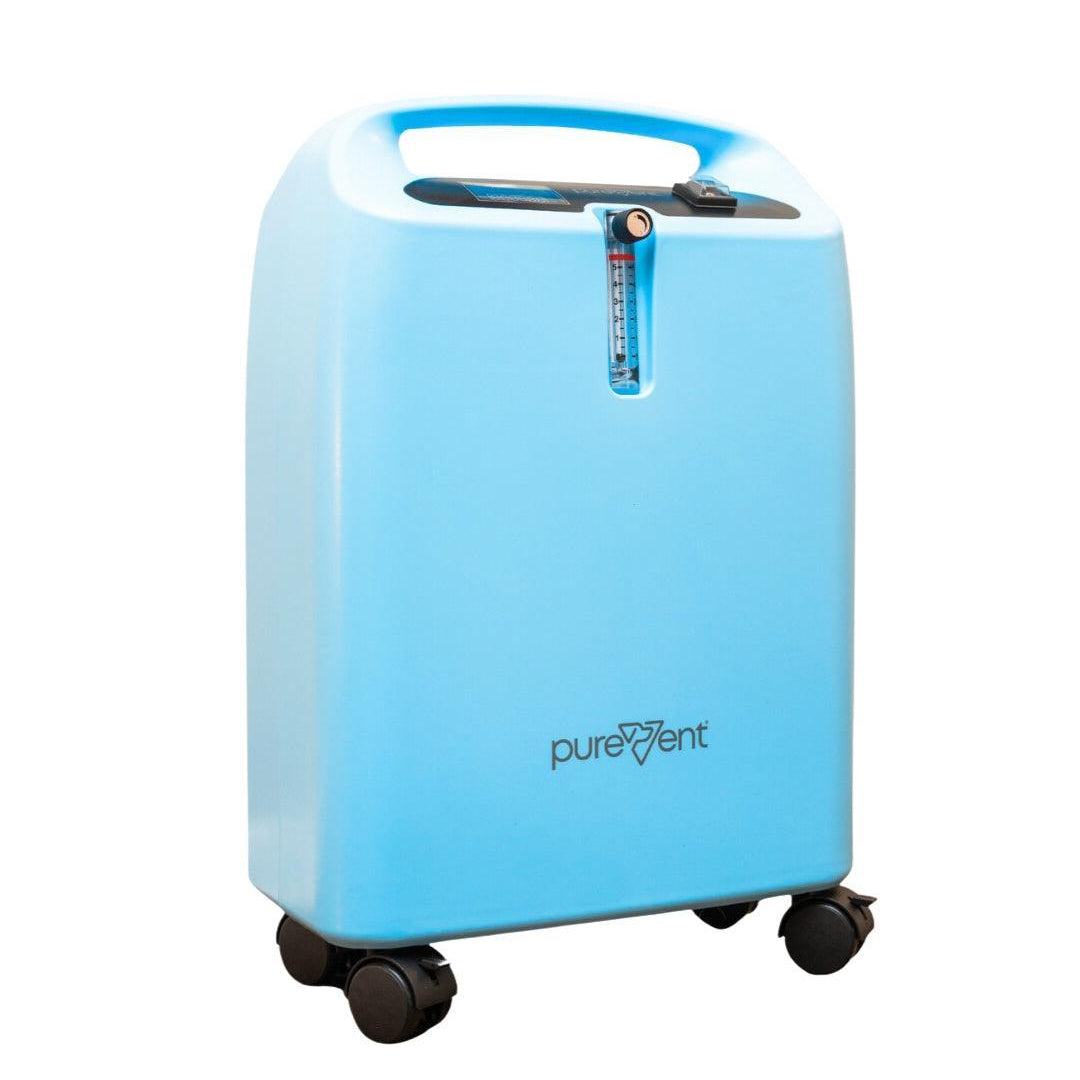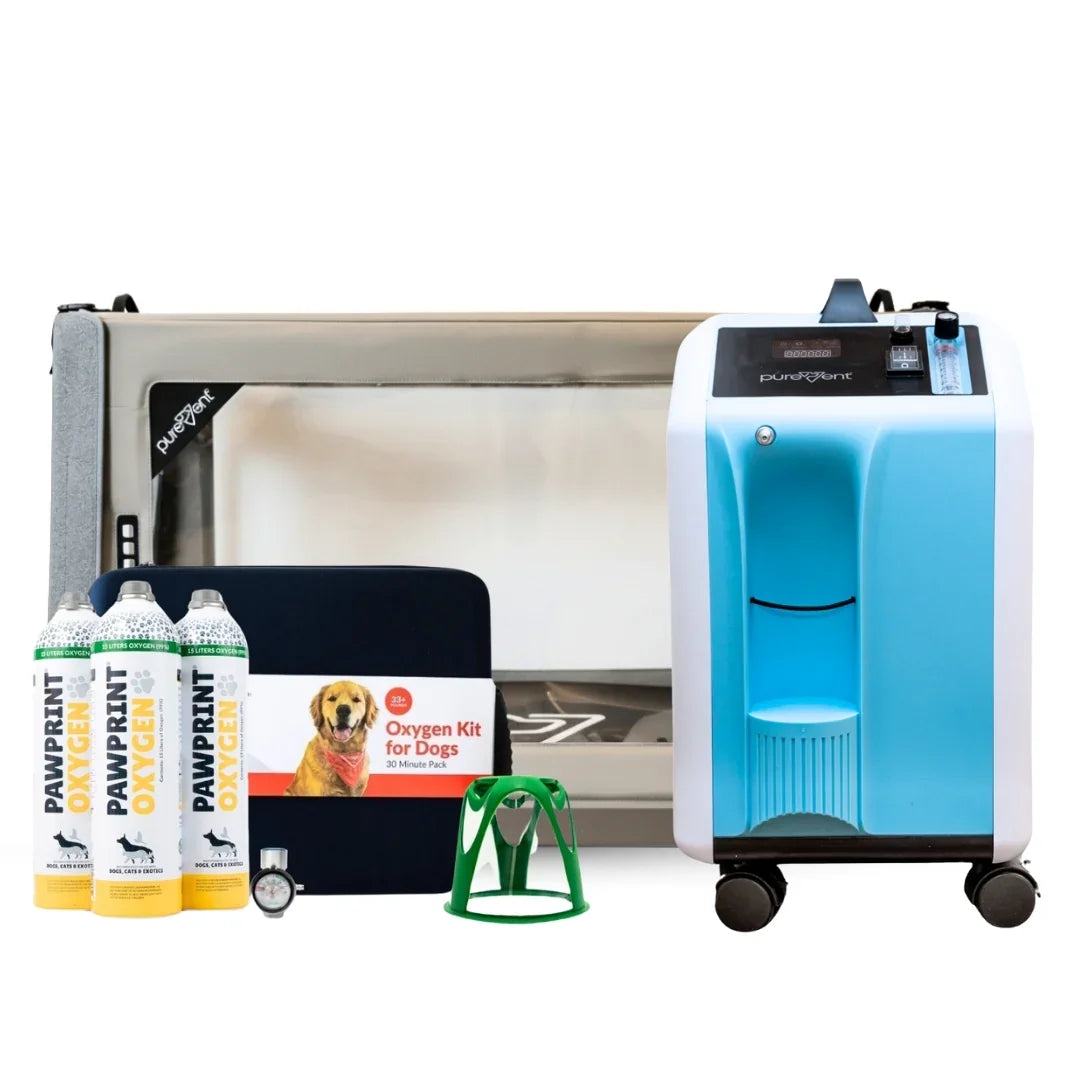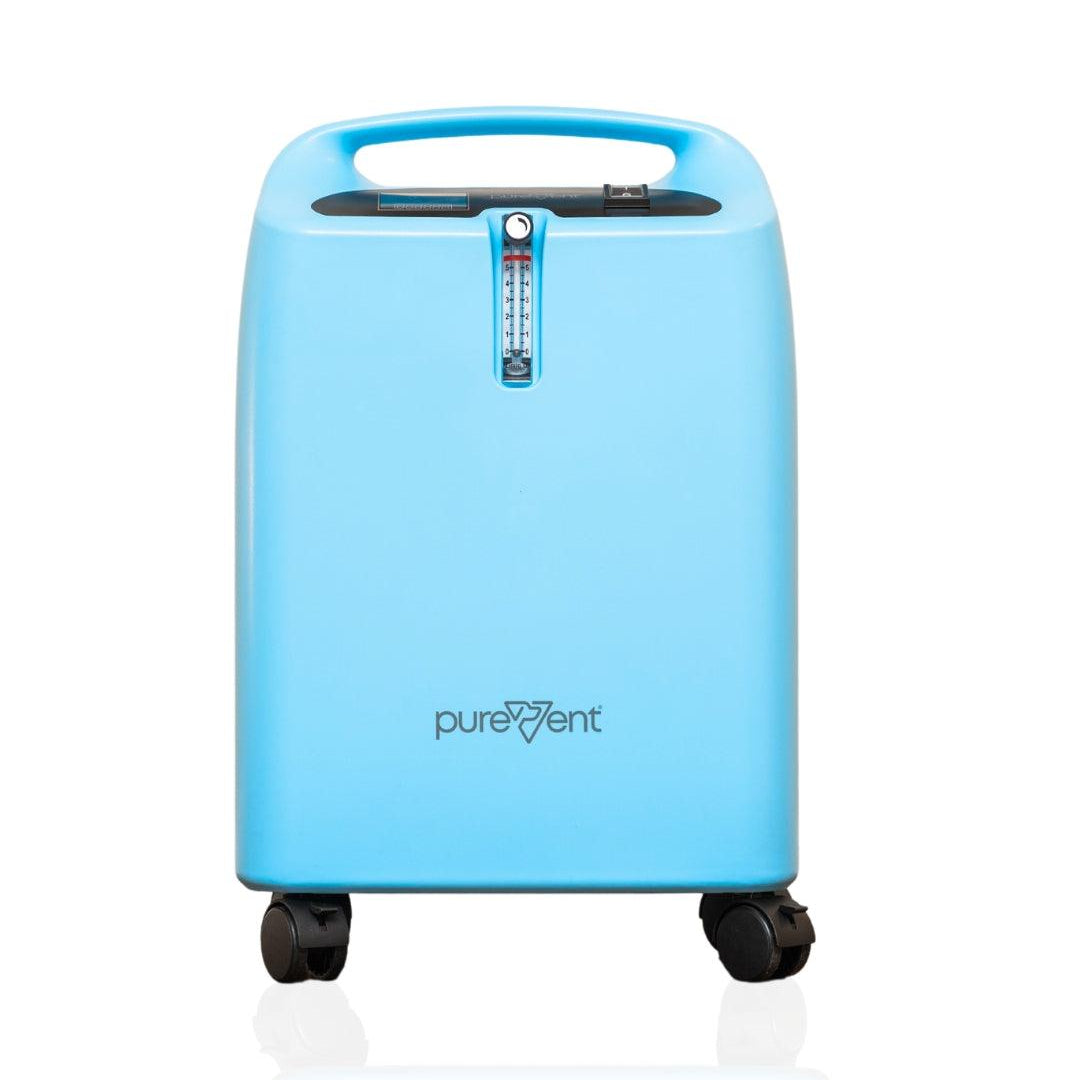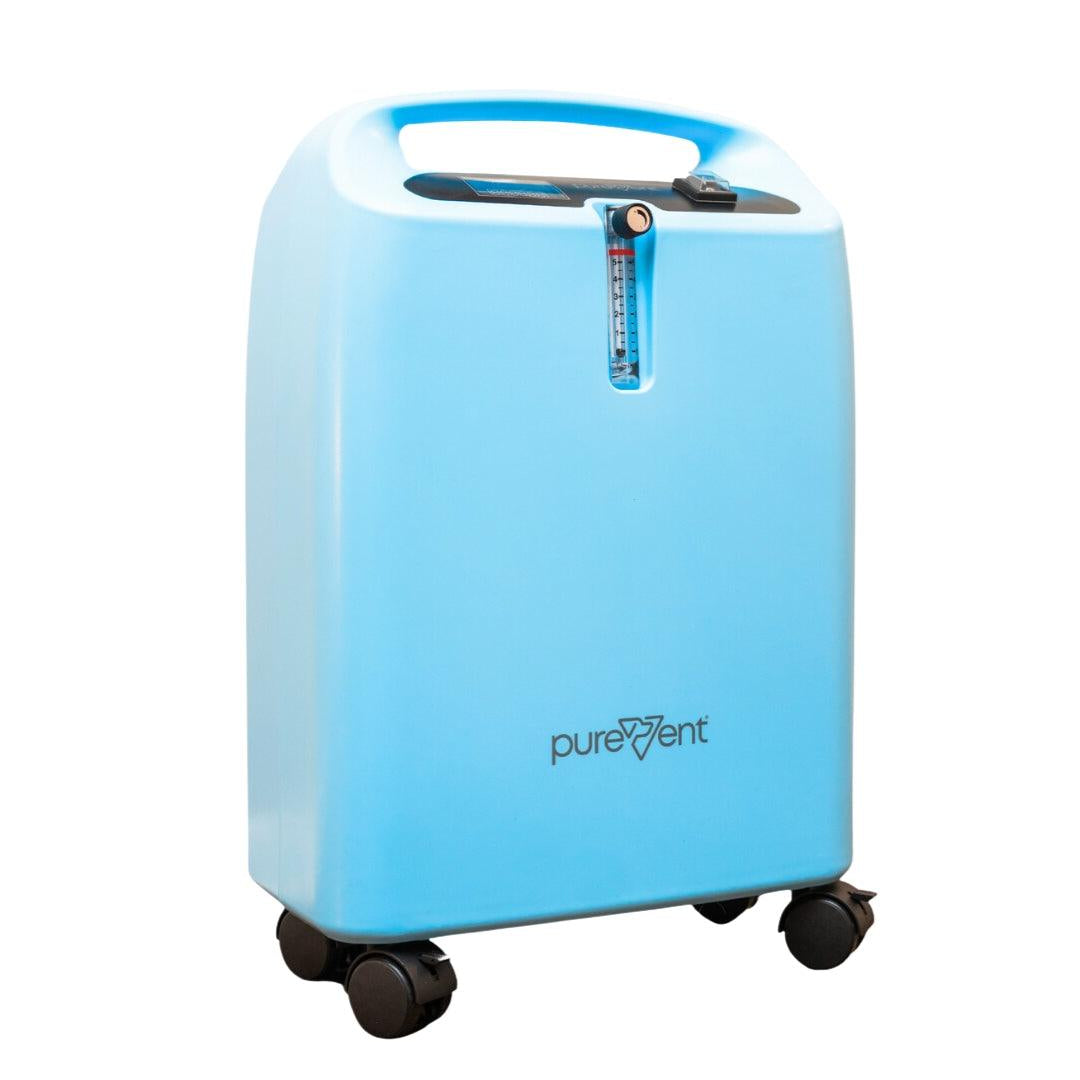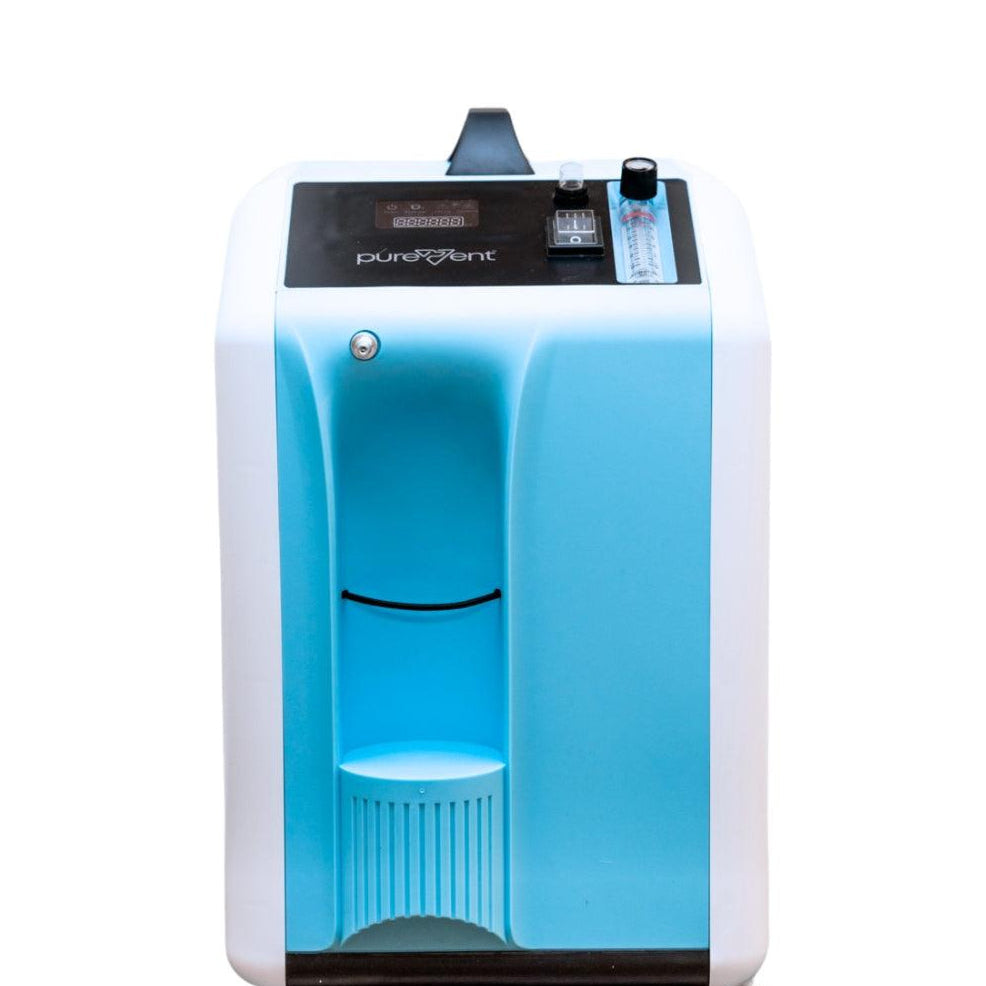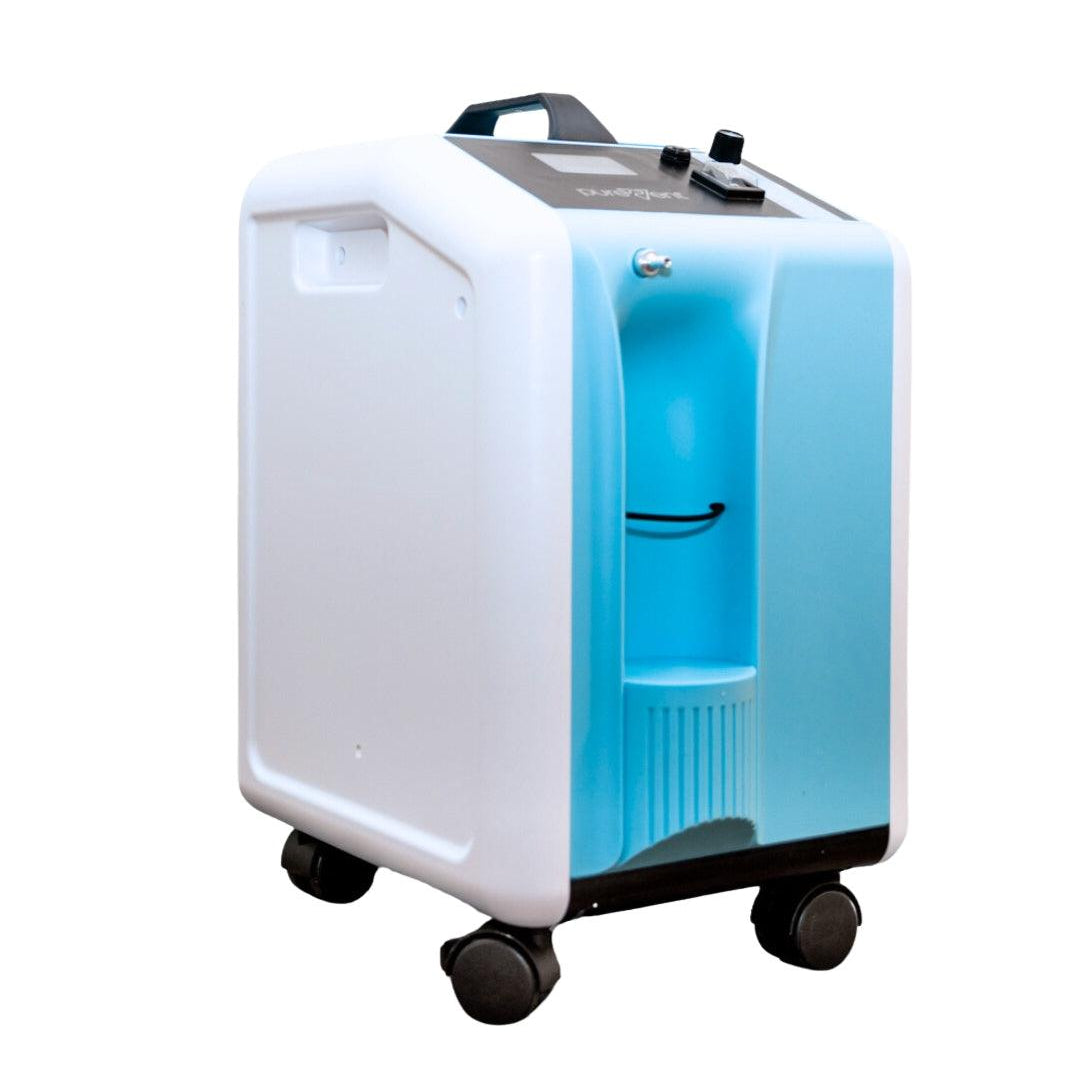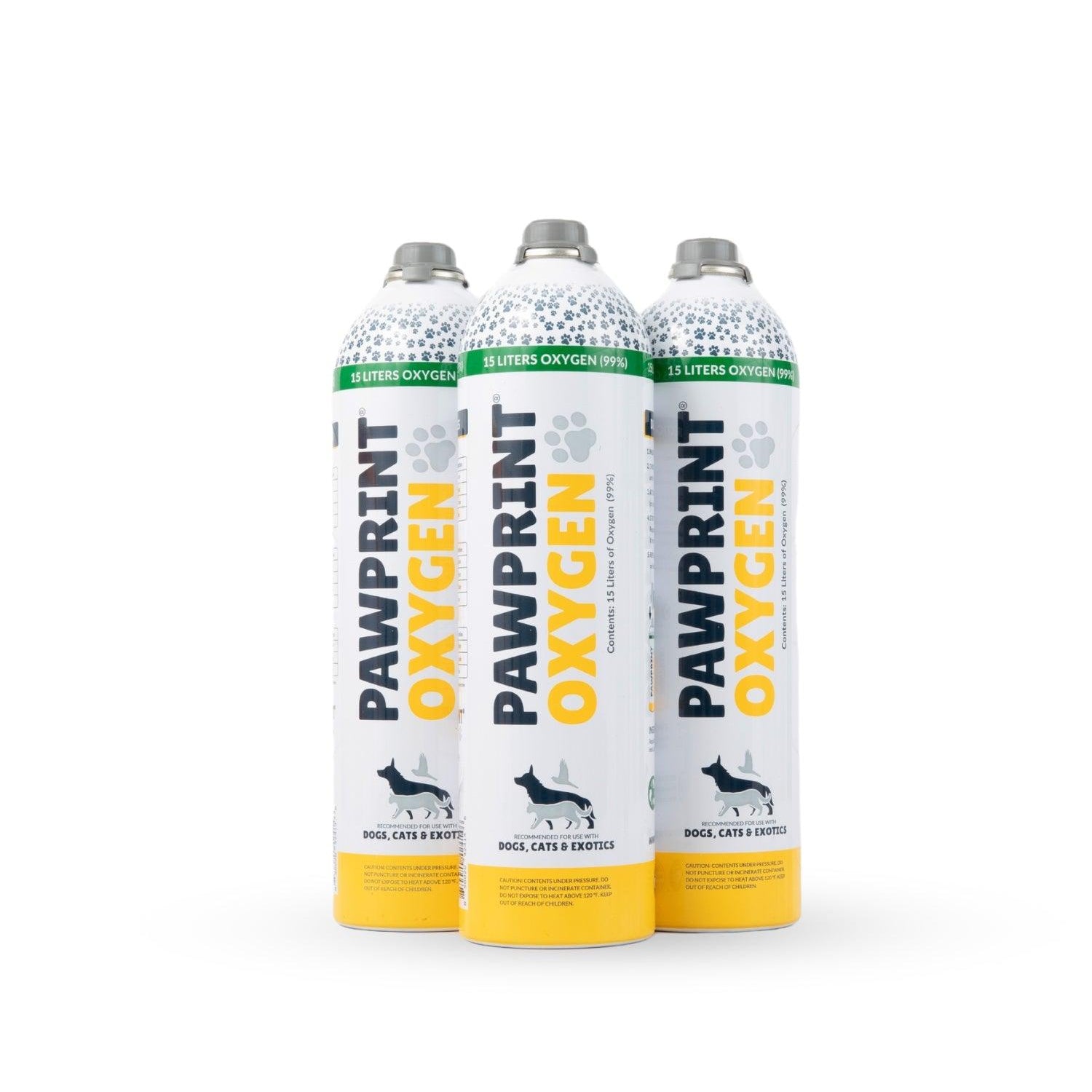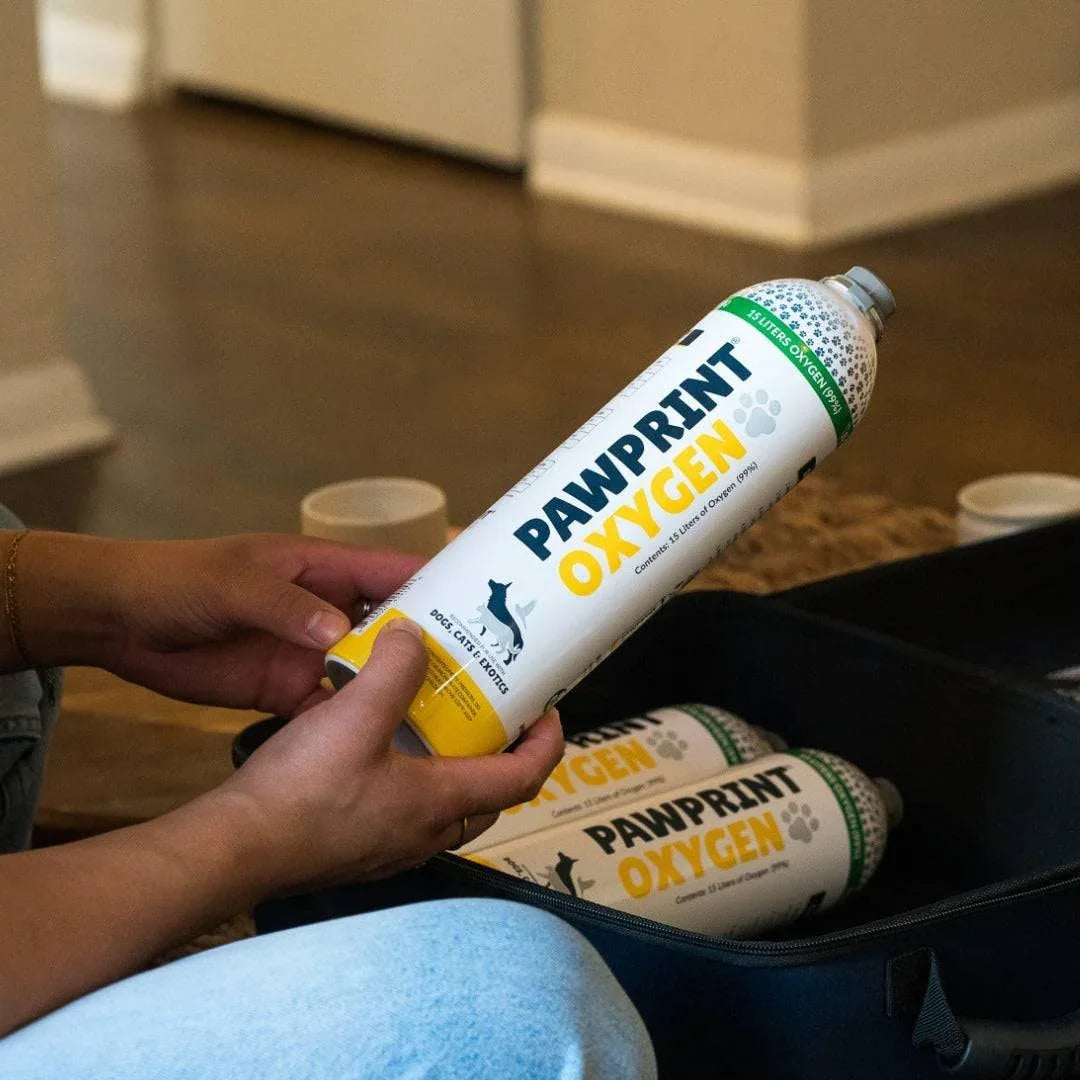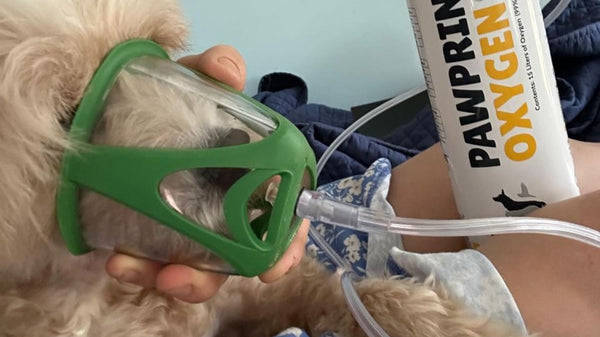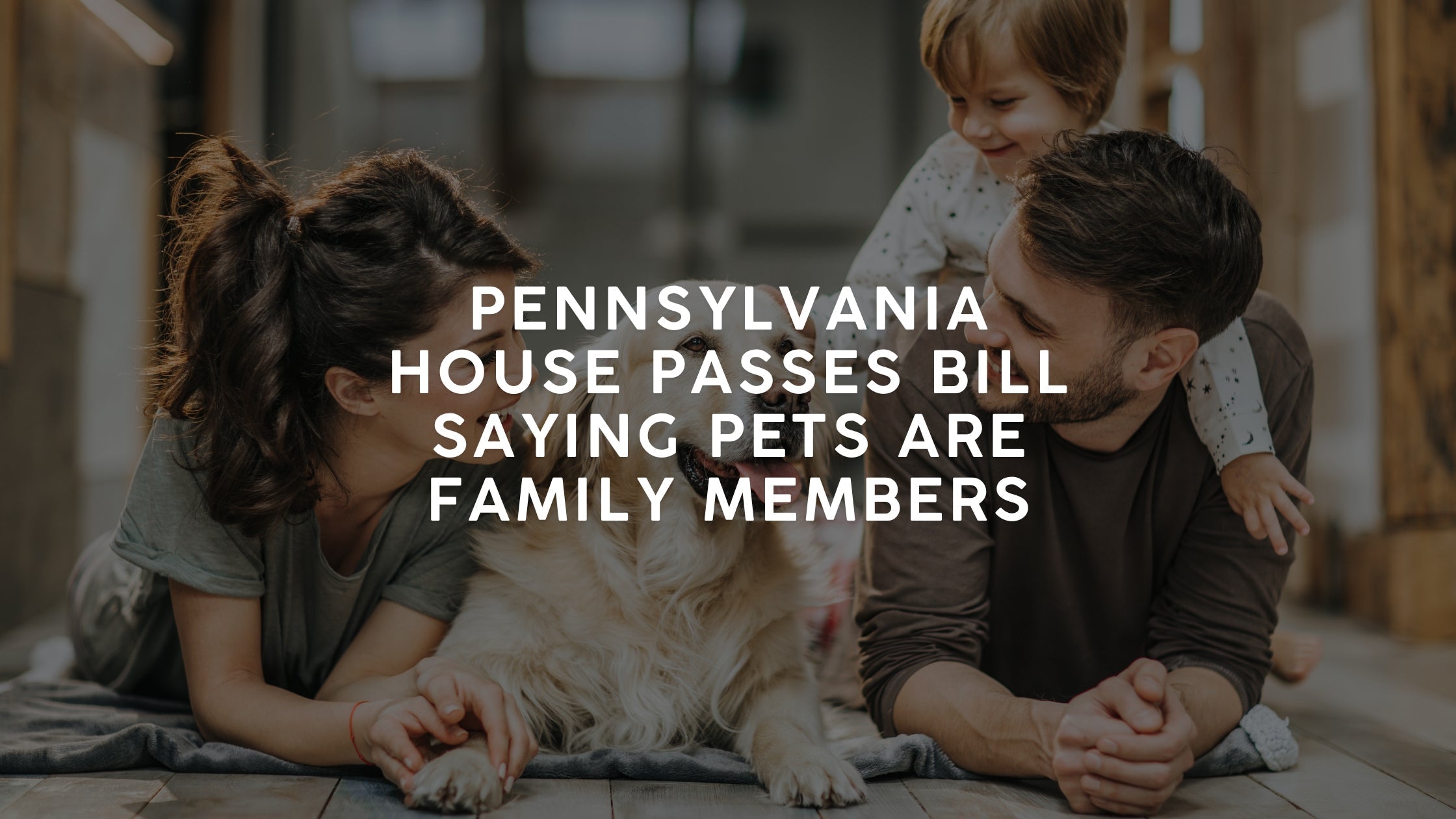Just like us, our pets can suffer from respiratory illnesses and conditions that require oxygen therapy. When choosing your pet’s oxygen products, it is vital that you choose medical-grade, quality equipment to ensure they are provided with proper medical care.
Many pets that require oxygen may have worsening symptoms when excited. Excitement, barking, stress, and an increased level of exercise can exacerbate many heart and lung conditions, leading to a higher risk for a medical emergency.
With a medical-grade oxygen concentrator and a PureVent Pet Oxygen Chamber, you can administer oxygen for longer periods of time for pets that require oxygen symptomatically or for therapeutic treatment sessions for a life-long condition like congestive heart failure.
This equipment can also be used short-term for recovery of certain illnesses, like pneumonia, or for recovery from surgery or injury. Having an oxygen concentrator and chamber on-hand at home keeps pets from being hospitalized for an extended period, which reduces costs for pet parents and stress for your pet.

The Risks of Low-Quality Oxygen Products
Having high-quality medical-grade equipment is essential to ensuring your pet is receiving proper medical care. Unfortunately for pet parents, there are many products on the market that will not produce a safe level of oxygen for your pet.
Labeled as non-medical grade oxygen or recreational oxygen, these products provide a low saturation of oxygen, which is not adequate to treat heart and lung conditions. Non-medical oxygen canisters, typically labeled for recreational use for humans, do not have an adequate dosing system so it is unclear how much oxygen, if any, your pet is getting.
PureVent 5L Medical-Grade Oxygen Concentrator
The oxygen concentrator plugs into a wall outlet (120V) and concentrates oxygen from room air, providing high purity oxygen gas (>90%). The oxygen concentrator provides an endless supply of continuous flow oxygen therapy and is recommended for pets requiring extended oxygen therapy (more than one hour per day). Use the oxygen concentrator with a PureVent Pet Oxygen Mask or an oxygen chamber.
Non-medical grade concentrators do not produce safe levels of oxygen
Typically, pets require a minimum flow rate of 5 Liters per minute to safely fill a small oxygen chamber, and the high-quality medical-grade concentrators are able to produce 90% oxygen saturation at 5 Liters.
Does Pawprint Oxygen supply medical-grade concentrators?
Yes, Pawprint Oxygen sells medical-grade, continuous flow oxygen concentrators that support a safe environment for your pet during oxygen therapy. We have two models:
- PureVent 5L Oxygen Concentrator: This model has a maximum flow rate of 5 liters per minute, which is required for the standard sized oxygen chambers.
- PureVent 10L Oxygen Concentrator: This model has a maximum flow rate of 10 liters per minute, which is required for the large oxygen chambers.
Do I need to refill the oxygen concentrator with more oxygen?
No, you do not need to refill an oxygen concentrator. It constantly generates oxygen by pulling in the room air and concentrating the oxygen down to 90% oxygen gas, so you never need to worry about running out of oxygen.
What maintenance is required for the oxygen concentrator?
These machines are very easy to use and require little maintenance. Other than the occasional wipe-down to remove excess dust and debris, there are two filters within the concentrator. The first filter you’ll see on the back is the pre-mesh filter. This can be removed and rinsed as needed with warm soapy water and allowed to dry completely before putting it back on the machine (much like your vacuum’s sponge filter). Behind the pre-mesh filter is the box filter, which does not need to be replaced until you’ve reached 5,000 hours (the hour-meter is the small digital display on the side of the unit) or one year of steady use. If you are renting, we will ensure your box filter is taken care of before sending out your unit!
The standard sized oxygen chambers require a flow rate of at least 5 liters per minute. The large sized oxygen chambers require a flow rate of 10 liters per minute.
Low-quality, non-medical grade units may produce 90% oxygen at low flow rates, like 0.5 to 1 Liter per minute, but as you increase the flow rate, the saturation of oxygen goes down, sometimes as low as 25%, which is barely more than you breathe in room air. This is not a safe level to fill an oxygen chamber.
Many of the non-medical grade oxygen chambers sold with these low-quality concentrators are also not set up to adequately vent CO2, heat, and humidity, and combined with the low saturation of oxygen, non-medical grade equipment can lead to a very unsafe environment for your pet.

Understanding Pet Respiratory Conditions
There are many conditions that require treatment with medical-grade oxygen therapy in pets. Some common conditions are:
- Feline Asthma
- Bronchitis
- Pneumonia
- Pulmonary Hypertension
- Congestive Heart Failure
- Collapsing Trachea
- Laryngeal Paralysis
Bronchitis, Feline Asthma, Pulmonary Hypertension, and Pneumonia, while very different conditions, have similarities in that these conditions constrict or block the lungs’ abilities to process oxygen. Lacking oxygen, the cells of the body become starved, creating a very dangerous situation for pets.
Antibiotics, diuretics, and bronchodilators are often prescribed to pets with these conditions, and prescribing oxygen along with these treatments can be very effective. Having oxygen on hand to administer while the lungs clear can be instrumental in keeping your pet comfortable.
Congestive heart failure is a very common condition in older dogs, and can lead to decompensation, a condition where the dog's blood oxygen levels drop very quickly due to the heart’s inability to keep up with the needs of the body. Having oxygen in hand will keep your dog comfortable while emergency care is sought.
Collapsing trachea and laryngeal paralysis are both very common conditions, and both benefit from oxygen therapy. The trachea and larynx can become inflamed or damaged, creating a blockage in the pet’s airway. Administering oxygen can give these pets much-needed oxygen so that further care or medications can be safely provided.
How to Choose the Right Oxygen Product for Your Pet
In contrast, the medical-grade products provided by Pawprint Oxygen are prescribed by your veterinarian, ensuring you are getting the equipment that will help your pet best. The PureVent Pet Oxygen Chamber used with our medical-grade concentrators can replicate the same conditions pets are in when they receive oxygen therapy at the veterinary office. The PureVent Pet Oxygen Chamber uses the Venturi system that allows pet parents to select the oxygen concentration inside the oxygen chamber. This allows for more control, as some conditions require specific concentrations of oxygen for treatment. For example, pets with heart conditions like congestive heart failure typically require 60% oxygen saturation, which means that the air inside the oxygen chamber will be 60% pure oxygen and 40% room air. With the different Venturi adapters, pet owners can set the oxygen concentration to exactly what the veterinarian prescribes.
The Portable Oxygen Canisters provide 99% pure oxygen in emergencies for use at home or during transport. With a selection of four pre-set flow rates that are prescribed based on your pet’s weight, medical history, and condition, you can ensure you are giving your pet the correct amount of oxygen. The specially designed PureVent Pet Oxygen Mask provides an oxygen saturation of 62%, which is ideal for emergency use.
By working with your veterinarian, Pawprint Oxygen can assist you with any questions you may have about your equipment and how to administer oxygen therapy to your pet. With over 6,000 pets helped, and over 5,000 veterinary offices utilizing our services across the US, our team members have the knowledge and experience to answer your questions. Having medical-grade oxygen equipment for your pet is the best way to ensure you are doing everything you can to keep them comfortable and thriving while on oxygen therapy.
"Love this company"
The Problem with Non-Medical Grade Oxygen Products
Health conditions require medical-grade oxygen, and the risk of providing your pet with therapy with a low-quality oxygen product can be detrimental to their health. Here are the major problems with these non-medical grade products:
- Not able to reach a high enough saturation of oxygen.
- Not able to reach a high enough flow rate.
- Unsafe build-up of CO2, heat, and humidity.
- Inability to vent properly.
- Not able to set the percentage of saturation to match pet’s condition and needs.
Additionally, many of the companies that sell non-medical grade equipment have misleading information in their product descriptions. For example, they often advertise that their concentrators can reach 90% oxygen saturation but will withhold information that this is only at very low flow rates.
The unsafe conditions created by the non-medical oxygen concentrators and chambers may cause your pet to go into crisis, since they are not receiving adequate oxygen. If the pet is left in the chamber too long without a high enough saturation of oxygen and a low flow rate, CO2 will build up and cause carbon dioxide toxicity, which is very dangerous and can lead to death if not remedied.

Summary
Purchasing a medical-grade oxygen concentrator for a pet is essential because these devices are specifically designed to meet stringent medical standards, ensuring the delivery of pure, consistent, and reliable oxygen essential for treating respiratory conditions like feline asthma.
Medical-grade concentrators offer precise oxygen concentration levels, critical for effective therapy, and feature safety mechanisms to prevent issues like over-pressurization or contamination, which are common risks with non-medical grade devices. Additionally, they undergo rigorous testing and a thorough certification processes, guaranteeing their efficacy and safety, which non-medical grade concentrators cannot reliably provide. Therefore, opting for a medical-grade oxygen concentrator ensures the best possible care and treatment outcomes for your pet's respiratory health.

